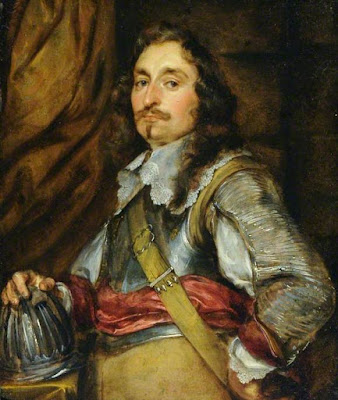 |
| Titian Portrait of Federico II Gonzaga, Duke of Mantua ca. 1530 oil on panel Museo del Prado, Madrid |
 |
| Titian St. Jerome in Penitence ca. 1531 oil on canvas Musée du Louvre |
 |
| Titian Madonna of the Rabbit ca. 1525 oil on canvas Musée du Louvre |
 |
| Titian The Entombment ca. 1520 oil on canvas Musée du Louvre |
 |
| Titian The Supper at Emmaus ca. 1535 oil on canvas Musée du Louvre |
"The art world in Mantua between Mantegna's death (1506) and Giulio Romano's arrival (1524) had been dominated by good, local artists, enlivened by occasional visits from some excellent masters from neighboring cities. The arrival of Raphael's pupil [Giulio Romano] marked a radical change in the city's artistic life. . . . Fortified by [Federico] Gonzaga's unconditional support – the artist and his patron were the same age and shared similar tastes and sensibilities – Giulio moved freely and without undue concern in court circles. . . . He did not interact with the local artistic community; instead he simply ignored it and imposed himself as a sort of hegemonic figure in the world of Gonzaga's artistic politics."
"Diana Brodart has undertaken a careful study of the relationship between the great Venetian master [Titian] and Federico Gonzaga. She has been able to document about forty of Titian's pictures that were sent from Venice to Mantua. These canvases were executed either for the duke himself, who often sent them as gifts to influential figures in the imperial court in order to solicit favors, or for important people at his court. For example the castle warden, Giovan Giacomo Calandra, owned a Titian Mary Magdalen, and Count Nicola Maffei's The Supper at Emmaus is now in the Louvre. The significant number of paintings Titian made for Mantua, including Federico's portrait in the Prado and The Virgin with the Rabbit, Saint Jerome, and The Entombment of Christ, all now in the Louvre, suggests a well-established relationship between the artist and the Gonzaga, and one that, because it was so visible in the small world of art in Mantua, must have had the blessing of Giulio Romano. Because their spheres of expertise were so different, Giulio could have had no legitimate fear of being overshadowed by his Venetian colleague: Titian was famous for his canvases while Giulio had essentially given up easel painting. He must have known that Titian had no intention of leaving Venice or of competing with him directly in Mantua. The artists appear to have known one another and even to have had a friendly relationship, as we can tell from several surviving letters, as well as the portrait Titian made of Giulio in about 1536. The latter was recently acquired by the province of Mantua and is now exhibited at the Palazzo Te. Titian paints Giulio proudly holding a drawing bearing the plan of a centralized building."
 |
| Titian Portrait of Giulio Romano ca. 1536 oil on canvas Provincia di Mantova |
 |
| Giulio Romano Triumph of Titus and Vespasian ca. 1536-40 oil on panel Musée du Louvre |
 |
| Giulio Romano and workshop Pluto driving his Chariot ca. 1532-36 oil on panel Kunsthistorisches Museum, Vienna |
 |
| Giulio Romano and workshop Ceiling Panels with Episodes from the Story of Psyche 1526-28 fresco Sala di Psiche Palazzo Te, Mantua |
 |
| Giulio Romano and workshop Mars and Venus Bathing 1526-28 fresco Sala di Psiche Palazzo Te, Mantua |
 |
| Rinaldo Mantovano assisting Giulio Romano Zephyr propelling Psyche over the Sea 1527 oil on stucco Sala di Psiche Palazzo Te, Mantua |
 |
| Giulio Romano and workshop Ceiling Panels with Mythological Figures 1526 fresco Sala dei Cavalli Palazzo Te, Mantua |
 |
| Giulio Romano and workshop Assembly of Gods on Olympus (detail) 1532-34 fresco Sala dei Giganti Palazzo Te, Mantua |
 |
| Giulio Romano and workshop Fall of the Giants (north wall) 1532-34 fresco Sala dei Giganti Palazzo Te, Mantua |
"Giulio Romano put together an enormous workshop of artists who could work up and then execute his designs while maintaining, as far as possible, a uniform stylistic tone. The master established the overall decorative framework of a room, the composition of its figural groups, and the placement of individual figures in an impressive number of drawings. His assistants then translated them, using a system of squaring, into cartoons that allowed the original idea to be transferred onto the walls themselves. Even the most talented artists who spent time in Giulio's workshop, like the Bolognese sculptor Francesco Primaticcio, had to rein in their own stylistic impulses in order to sustain a uniformity that reflected the master's style. And with little documentary evidence to help us, it is very difficult to distinguish individual hands in the decorative cycles."
– extracts from The Art of Mantua: Power and Patronage in the Renaissance by Barbara Furlotti and Guido Rebecchini, translated by A. Lawrence Jenkens (Getty, 2008)
 |
| Giulio Romano and workshop Fall of the Giants 1532-34 fresco (photographed by Candida Höfer in 2010) Sala dei Giganti, Palazzo Te, Mantua |










































